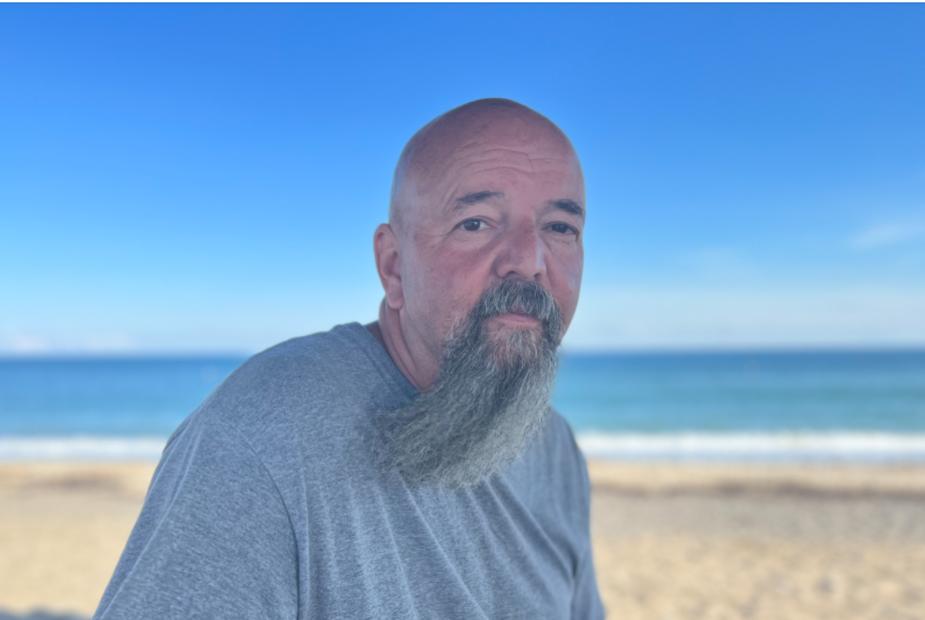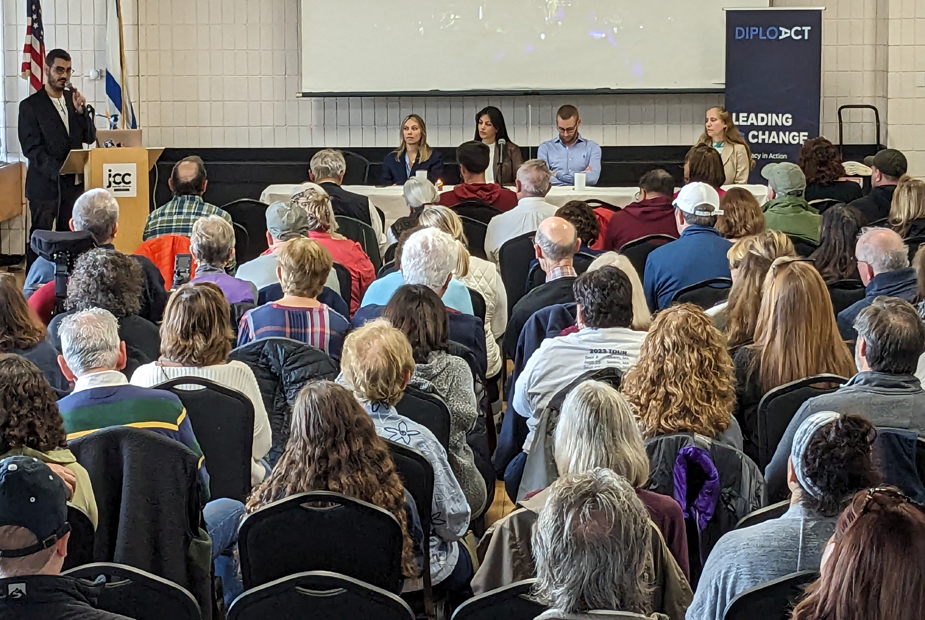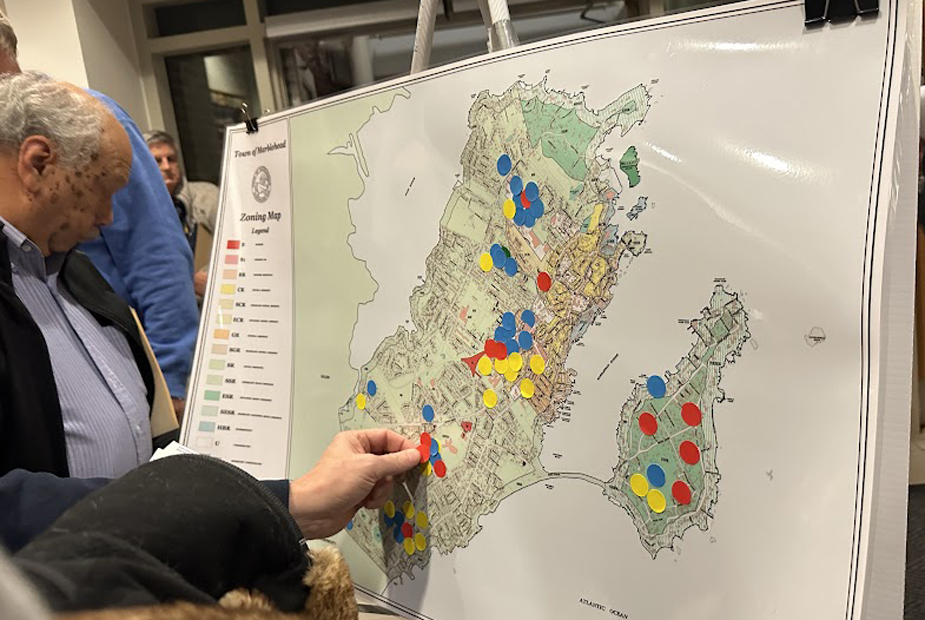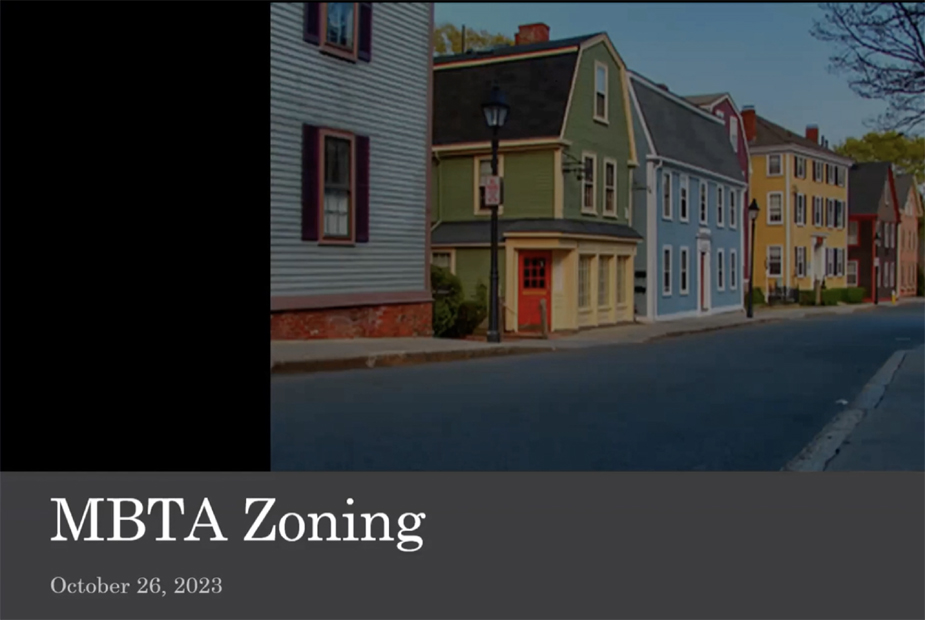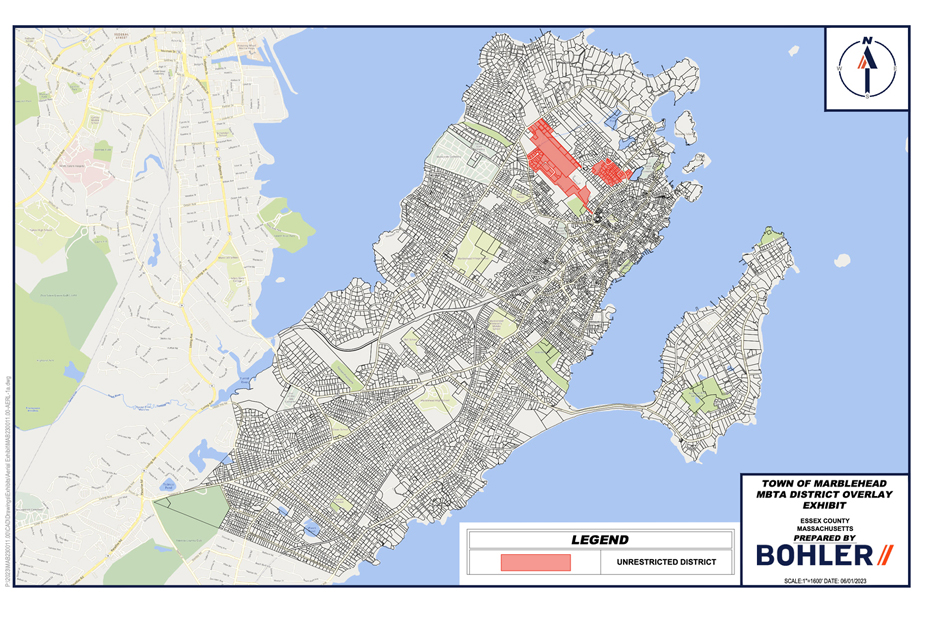Custodian, Others Potentially Exposed to Asbestos in Mary Alley
One Month Later, Town Officials Have Yet to Make Report Available and Have Little to Say
A Marblehead Beacon Focus Piece
Last month, Town of Marblehead custodian Ed Medeiros says he was assigned to prep and paint a closet in a stairwell in the Town’s Mary Alley Building (“Mary Alley”). While he was standing on a ladder and beginning prep work, significant debris got dislodged and crumbled around him. That debris turned out to be asbestos, and what followed, he says, has been an ordeal marked by the complete inability to get answers from the Town of Marblehead.
For close to 14 years, Medeiros, 59, has been taking care of the employees of and visitors to Mary Alley and Abbott Hall. He cleans the toilets, stocks the bathrooms, removes trash, and makes certain the floors are clean and the walkways clear. Unofficially, Medeiros is known as a custodian; technically his title is “Special Laborer 1.” He has been a fixture in Marblehead for many years, along with his wife, Patricia, who drives a bus for the Council on Aging.
Medeiros and his union representative, Terri Tauro, President of the Marblehead Municipal Employees Union (“MMEU”) IUE-CWA Local 81776, allege that actions surrounding the debris falling on and near Medeiros constituted negligence and posed a risk to Medeiros and possibly other individuals in the building. They further suggest that inaction and the lack of transparency by the Town of Marblehead in the days and weeks following the incident make the matter even more fraught.
“If only they had just dealt with this right away,” said Tauro. “We tried to make it right and did not go right to the Labor Board. We tried to work with them but when they started blaming Ed, I said, ‘Where are the protocols and where is the asbestos report?’”
Tauro got involved, she says, when she researched Medeiros’ allegations and realized there were potentially several significant violations of safety and no proper follow-up. She told Marblehead Beacon that “what could have potentially been mitigated with appropriate behavior by Building Commissioner John Albright, turned into something much worse.”
Medeiros contends he attempted to get the matter properly dealt with by Albright, his supervisor, for nearly a week, ultimately reaching out to Tauro only once he realized that Albright had seemingly failed to submit the report detailing the facts as he says they transpired on May 17, 2022.
In the more than one month since the incident in question, other than a disputed verbal statement by Albright about the materials “being hot,” and a hand-written statement by Albright that may have been back dated, and in which Albright noted the sample had tested positive for asbestos, no further information (including the test report) has been supplied to Medeiros, Tauro, or the union’s attorneys.
Marblehead Beacon reached out to Albright four times by email and once by telephone, specifying that we were seeking to discuss the incident involving Ed Medeiros. The extent of the response from Albright came in one email on June 9: “Thank you for your interest. We’ll provide comment as soon as possible.” He did not follow up again.
Background
Medeiros claims that when an assignment to paint the Mary Alley stairwell closet initially was given to him, he inspected the space so he could properly prepare. Due to the dilapidated appearance of the area, he asked his boss via text (on Friday, May 13) if he should be worried about lead paint. “I didn’t go to college,” he told Marblehead Beacon. “I don’t know about stuff like this. It just looked dilapidated so I asked.”
Albright emailed him (Monday, May 16) stating, “I tested several chips, one of the negative results chips is still on the shelf. There is no lead in the paint. Please make the closet painting an absolute priority. No waste baskets, recycling, just get the room painted. Let’s get this done asap so the building department and MMCU can get back in the space. Thank you.”
Events at Issue
On Tuesday (May 17) Medeiros arrived at Mary Alley for his 1:00 to 10:00 PM shift. Immediately he began prepping the closet, he says. He’d brought a surgical mask from home and wore it for work in the unventilated closet. The prep work involved, in part, using an approximately 10-to-12-foot ladder to reach the top areas of the closet for scraping and painting. In order to collect debris, he says he wore a vacuum cleaner strapped to his back, and would alternate between scraping and vacuuming. He says that Albright told him the can or cans of paint would be ready at about 3:00 PM.
At some point that afternoon, prior to Albright bringing him the paint, Medeiros says that while he was on the ladder scraping, either his elbow or the vacuum cleaner hit apparent insulation on an adjacent pipe, and significant amounts of debris crumbled and fell, some landing on his clothing. He continued scraping, not aware that the debris had any potential hazards associated with it, particularly after his boss had reassured him about lead testing. Shortly after the debris got loose, Medeiros says that Roger Ennis, a building inspector, walked by and said something along the lines of, “What are you doing in here? You should not be in here with that” pointing to the debris.
Ennis, according to Medeiros, registered concern that the materials could be asbestos, and seemed especially troubled about the lack of ventilation in the closet. Ennis went to notify Albright, the Building Commissioner.
According to Medeiros, Ennis and Albright went behind closed doors to talk. When Albright came out, Medeiros said Albright apologized for forgetting to test for asbestos but then told Medeiros that he had gone “too far” with scraping. “He blamed me,” said Medeiros, and I told him, “But I was just attempting to be thorough.” At that point, Medeiros contends that Albright retrieved plastic baggies, and together he and Albright collected some of the debris from the closet floor, triple bagged it, and Albright placed the bags into his own car’s trunk as Medeiros watched. Then Medeiros says that Albright told him to vacuum and clean up the remaining debris, gave him Kilz 2 brand paint primer, provided him with a KN95 mask, and told him to continue his work in the closet, which he did until his shift ended that day.
Medeiros reported to work the following day (Wednesday, May 18), filled out a standard accident intake form noting a possible asbestos exposure from the day before, placed it on his boss’s desk with a note asking him to complete his portion, and continued with his work in the closet. Medeiros says that such forms are used frequently, and that workers fill one out “even for a splinter because it’s protocol.”
Medeiros says he had one fan and the KN95 Albright had given him after the debris episode. He moved the fan around to help circulate air, he says, but there was no opportunity for cross-ventilation. According to the manufacturer’s warnings for the Kilz 2 product, “prolonged exposure may cause headaches, dizziness, nausea, and vomiting.” It further reads, “Do not use this product unless you can achieve cross-ventilation by opening windows and doors during application and drying or use the product outdoors.” The warnings add that Kilz 2 is harmful if inhaled, and that protection for eyes, as well as gloves, a mask, and protective clothing should be worn when using it. Apart from the KN95, Medeiros had not been given any personal protective equipment.
Medeiros says he went on to paint for the rest of the day other than during lunch and a brief moving assignment. As the day wore on he started to feel unwell, but says he got a second coat of the Kilz 2 on the walls before his shift ended. He went home, feeling increasingly sick. By about 8:00 PM he says he had an intense migraine, was vomiting, and was experiencing lightheadedness and vertigo, which he believed was from the Kilz 2 fumes.
The subsequent two mornings (Thursday and Friday, May 19 and 20) Medeiros called in sick by text message to Albright, which he says was protocol, but when he did not hear back either time, he also texted another office employee, and called the office as well.
The following Monday (May 23) Medeiros returned to work. He was surprised to find, he contends, that the incident report that he’d completed five days earlier had still not been submitted by Albright to Payroll, as was protocol. It was at that point that Medeiros advised Tauro of the incident, at which point she requested the report on behalf of the Marblehead Municipal Employees Union (“MMEU”).
The next day (Tuesday, May 24), Medeiros asserts that Albright verbally told him that “the sample was hot” and that he would have it abated. He further contends that he asked Albright to elaborate and was told that the sample had tested positive for asbestos and to stay out of the area.
Medeiros contends that as of Thursday, May 26, some eight days after he had turned in his report to Albright, the report had still not been completed and submitted to Payroll. Medeiros had no paperwork about the asbestos and no guidance on what he should do so many days after an exposure, only a verbal statement that it was positive (which Albright would later deny having made).
It was not until Tuesday, May 31 that Tauro received a copy of the report with Albright’s version of events, which include, in part that “at no time was the employee asked to disturb or remove insulation.” It also said that “subsequent to 5/17/22, material samples were observed…and determined to contain asbestos.” According to Albright, A-Best Abatement’s Glenn Homsey identified the asbestos on Monday, May 23, yet Albright’s very same document that referred to May 23 was dated May 18. Albright further contends in the report that the “closet was locked and sealed Friday, 5/18/22 and notice posted ‘Do Not Disturb.’” It is noteworthy that May 18 was not a Friday, and that Tauro herself inspected the premises the following week on May 27, and the closet was neither sealed nor was there a sign on the door. In fact, she was able to take photographs of the taped-up pipe in the closet, and also noted that the vacuum cleaner containing the remaining asbestos was still sitting in the dump sink in another room in Mary Alley.
Marblehead Beacon, Terri Tauro, and Attorney Ryan Quinn of Segal Roitman LLC, all sought to get copies of the asbestos report purportedly generated by A-Best Abatement, as well as other documents related to protocols surrounding possible exposure to toxic or contaminated areas. As of the time of publication, approximately one month after the incident in question, no such report has been forthcoming from anyone representing the Town of Marblehead. Additionally, the Town has yet to provide Tauro with test results requested for the building air, the Town of Marblehead’s accidental exposure protocol, the Town’s risk assessment plan as it pertains to asbestos and other toxic exposures, the Town’s heat map for all municipal buildings known to have asbestos, or the status of the vacuum cleaner that was used to clean debris in the exposed area.
In a June 9 telephone conversation with Marblehead Beacon, Town Administrator Thatcher Kezer, who at that point had only been on the job less than one week, said, “A grievance has been filed, yes. We’re going through the process. And to respect the process that involves personnel, I am not at liberty to discuss it.” Asked if Building Commissioner Albright had been trained in asbestos removal or mitigation, if there were booklets or publications with protocols, or if Albright had trained his personnel, Kezer said he did not know. With respect to the existence of an asbestos report, Kezer said he could not provide any information in that regard, stating only that “we follow proper protocols and are doing our due diligence to address the grievance.”
Department of Labor Standards Investigation
According to Quinn, as part of its investigation into this incident, the Department of Labor Standards held a meeting at Mary Alley on Thursday, June 16. The parties at the meeting, including two representatives of the Department of Labor Standards, Medeiros, Albright, a representative from the union, discussed various safety issues in connection with the May incident and the Mary Alley facility in general. The matter of asbestos inside the Mary Alley building, according to Quinn, has been referred to another agency for further investigation.
At last Thursday’s meeting, according to Quinn, when the question was raised as to whether Albright had told Medeiros that the sample “was hot,” Albright told investigators that in fact he had not said that. He contended that he had said he would advise Medeiros if the samples were hot. His own handwritten statement that he dated “5/18/22” but does not seem to have filed until closer to the end of the month suggests that he had learned of the sample’s positive result on May 23. Additionally, at that meeting, says Quinn, Albright said he sealed off the closet on May 17, which contradicts his own statement in the incident report in which he claims to have sealed it off on May 18, and also runs counter to Medeiros’ contention that he worked most of his shift in the closet on May 18. Additionally, time-stamped photographs taken by Tauro purport to show a closet that is not sealed off on May 27, and there has been no evidence provided to Tauro showing that the asbestos exposure was remediated.
According to the United States Department of Labor’s Occupational Safety and Health Administration, “There is no ‘safe’ level of asbestos exposure for any type of asbestos fiber. Asbestos exposures as short in duration as a few days have caused mesothelioma in humans. Every occupational exposure to asbestos can cause injury or disease; every occupational exposure to asbestos contributes to the risk of getting an asbestos related disease. Where there is exposure, employers are required to further protect workers by establishing regulated areas, controlling certain work practices and instituting engineering controls to reduce the airborne levels. The employer is required to ensure exposure is reduced by using administrative controls and provide for the wearing of personal protective equipment.”
Because Mary Alley is a building in which municipal employees along with members of the public spend time, the Town of Marblehead’s transparency with regard to potential asbestos exposure as well as its actions in the wake of the May 17 incident are undoubtedly of interest to many besides Medeiros and his representatives. Furthermore, this event raises important questions about the Town’s safety protocols and the training and education of employees about critical hazards, including asbestos.
Marblehead Beacon will update this story as it unfolds.
Editor's note: An earlier version of this article incorrectly noted that Medeiros had worked at Abbott Hall on the morning of May 17 before his shift at Mary Alley, that the plastic baggies were "zippered" (they were plastic but not zippered), and that Medeiros had walked down the hall with Ennis. We have updated the story to reflect these corrections.

